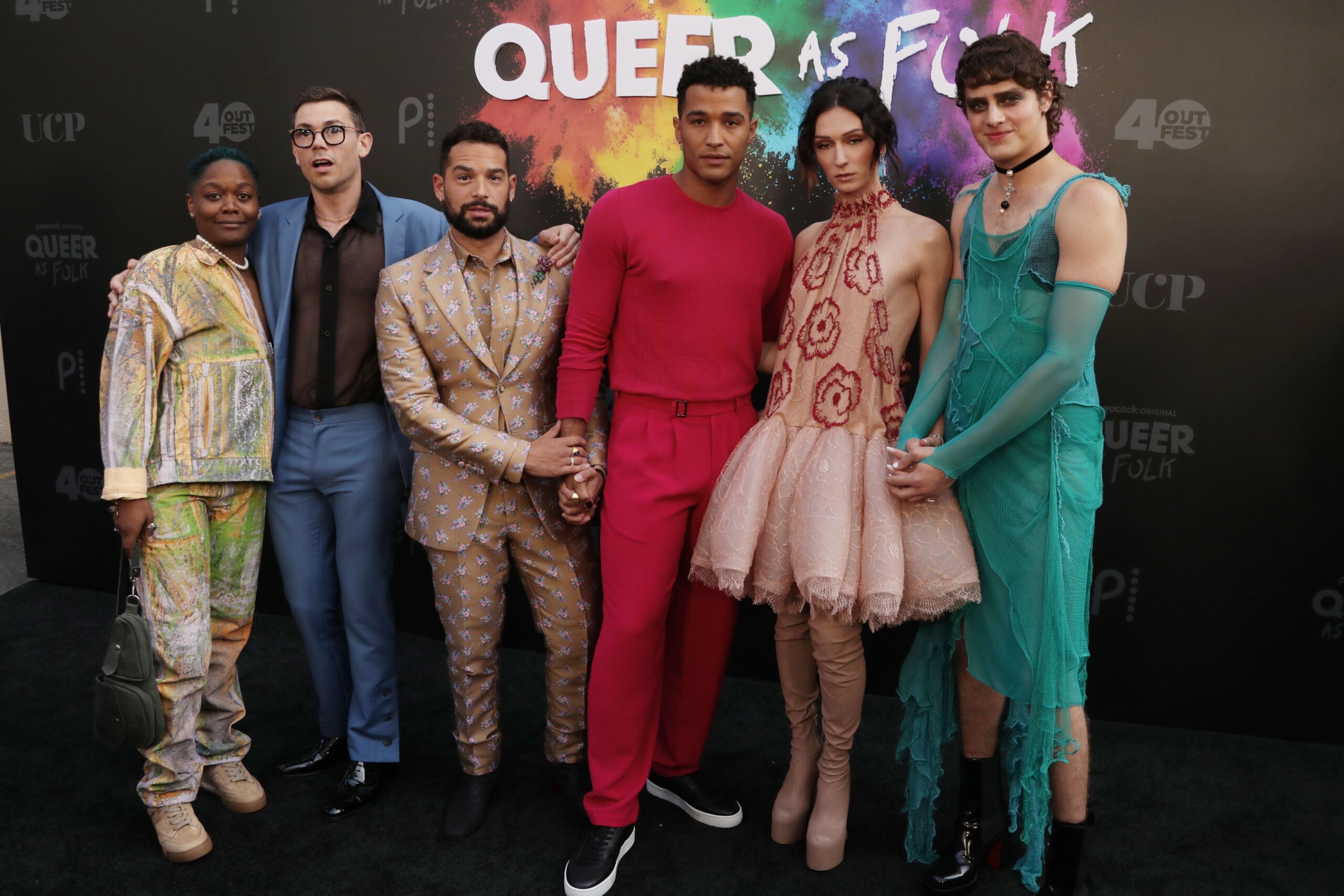
Peacock's reimagined 'Queer As Folk' premier, Outfest's 2nd Annual The OutFronts, Los Angeles, June 2022
Photo by Matt Baron (Shutterstock)
In the early 2000s, Queer as Folk captivated audiences with its honest portrayal of the lives of LGBTQ+ men and women living in Pittsburg, Pennsylvania.
It also drew a lot of controversy through its depictions of the many issues gay men faced at the time, including homophobia, recreational drug use, underage prostitution, and bug chasers (people who intentionally tried to contract HIV). Queer as Folk tackled topics usually considered too taboo for television, pushing boundaries and making way for the shows that came after. Considering the show’s lasting impact on LGBTQ+ representation in media, alongside its 20th anniversary coming up in December, Queer as Folk is long overdue for a reboot.
Based on the British series of the same name, the American version of Queer as Folk set itself apart from the rest of television. One aspect that advanced the show’s representations of LGBTQ+ people in the 2000s was the writers’ willingness to develop the characters beyond their sexuality. After all, sexuality is just one element of a person’s identity, and not even necessarily their defining one. Michael is a comic book nerd and slacker, Ben is a college professor, Brian is an advertising executive and dad, and Ted is a reliable accountant before becoming a drug addict due to mental health issues. None of them are reduced to stereotypes, despite falling across a spectrum of flamboyance.
As time went on, shows carried on Queer as Folk’s torch, portraying LGBTQ+ characters as complex people. Captain Ray Holt from Brooklyn Nine-Nine, Alex Danvers from Supergirl, and Omar Little from The Wire have shown that you can do anything as an LGBTQ+ person (obviously).
The proverbial “Ross and Rachel” of Queer as Folk was the undeniably cute pairing of Brian and Justin, who met at a nightclub and hooked up after the first episode. Nowadays, it would be like meeting someone on Grindr one night and forming a five-year-long relationship with them. Justin’s teenage adoration of the independent Brian was interesting to watch as he grew up into his own man. In fact, they were one of the only couples on TV at the time who could be considered normal and functioning.
Queer as Folk | Official Trailer | Peacock Originalwww.youtube.com
Of course, there were always issues for the couples in Queer as Folk to work through, but the characters handled problems like sensible adults. Even when their issues were considered taboo, they were always presented and resolved in a serious, respectful manner. For instance, Michael and Ben struggled with how to be intimate after Ben’s HIV diagnosis, so they took their time and resolved their issue with care and compassion. Eventually, they even got married. Couples like Brian and Justin and Michael and Ben laid the groundwork for popular LGBTQ+ ships like Ian and Mickey from Shameless, Patrick and Richie from Looking, and Kevin and Scotty from Brother & Sisters.
In its final season, Queer as Folk did its best to enact real-world change by showing how Proposition 14 affected the lives of the characters that viewers had come to know and love during its five-year run. Since then, TV shows have not shied away from applying a pro-LGBTQ+ lens to politics. Drag Race has shown RuPaul and contestants making light of the Trump administration. Milk (a movie about Harvey Milk, the first openly gay elected official in California, won an Oscar). There’s even The Politician, a Ryan Murphy show about a gay student who wants to eventually become President of the United States.
That’s not to say Queer as Folk was perfect. While there was an incredible amount of LGBTQ representation in the show, that was the only diversity present. The cast was almost entirely comprised of cis-white men, which definitely wouldn’t go over well today. As a result, even though the show’s subject matter was centered around a marginalized group, it alienated a large portion of the LGBTQ+ population by not including any people of color. Then again, that was pretty much the state of media in general during the early 2000s. Representation for gay white men was rare; but for LGBTQ+ people of color, it was nonexistent. We’ve made big strides in that sense, thanks to shows like Pose, Orange Is the New Black, Rupaul’s Drag Race, and Sex Education.
As for the show’s depiction of drug use and the club scene, it’s clear from watching the first episode of Queer as Folk that things were a bit different in 2000. Everyone was just coming off the club scene of the ’90s, so dance music, neon clothes, and coke were essentials for any party worth talking about. Unfortunately, this is where the idea that all gay men were rampant drug users came from. Going out to bars and clubs was how you met people because Grindr and Tinder hadn’t been invented yet. As homosexuality was still very much a “bad thing” to most of the world––remember gay marriage didn’t even become legal in the United States until 2015–drugs and parties were a way to openly express your marginalized and stigmatized identity.
In late 2019, The L Word, a show about the lives of LGBTQ+ women in Los Angeles, received a reboot. Queer Eye has also returned. It’s finally time to revive Queer as Folk, too. As one of the most influential pieces of LGBTQ media–a show that helped shape the following decade of LGBTQ+ representation on television–it would be meaningful to see how the characters adapt to the downfall of wild nightlife and the rise of internet dating, as well as an overall shift towards greater acceptance of LGBTQ+ people in America. Queer as Folk showed the country that people in the LGBTQ+ community are equal to everyone else, and now that America has changed under the Trump administration, it would be great to see how Queer as Folk could adapt to give us a reminder.- ‘Queer As Folk’ Reboot In Works At Bravo – Deadline ›
- Queer As Folk to get American reboot | Television & radio | The … ›
- ‘Queer as Folk’ Is Getting a Reboot, but Is It Ready for 2019? ›
- ‘Queer as Folk’ Reboot, ‘One of Us Is Lying’ at NBCUniversal’s … ›
- A ‘Queer As Folk’ Reboot Is In The Works | HuffPost ›
- ‘Queer as Folk’ Reboot in Development at Bravo (EXCLUSIVE … ›
- Queer as Folk reboot in the works at Bravo | EW.com | EW.com ›
- 8 People to Cast in the Upcoming ‘Queer As Folk’ Reboot ›
- Bye Bye, Bravo: “Queer as Folk” TV Reboot Finds New Home … ›
- The ‘Queer as Folk’ Reboot Will Air Here ›
- The ‘Queer as Folk’ Reboot Will Air Here ›














